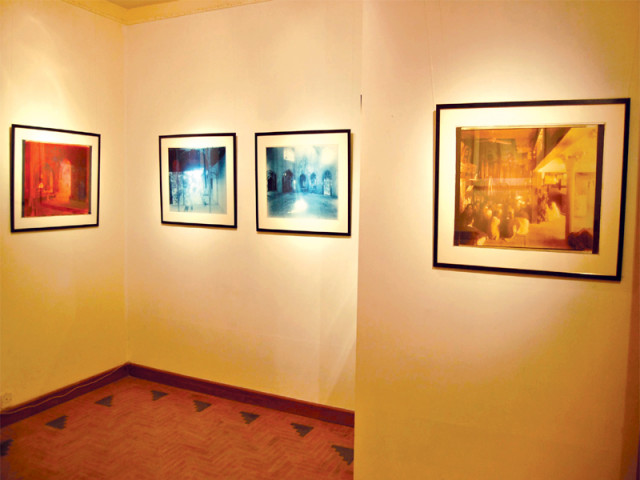
A sequence of photographs encompassing Sufism, local architecture and inherent cultures were displayed at the Rohtas Gallery on Monday. The man behind the “Twilight” series (not the movies) of photographs, is a German anthropologist and artist — Lukas Werth. He attempts to present a story through his work.
Intrigued by Sufism and the mysticism of Pakistan, the photographs spotlight various shrines and depleted architectural structures in Islamabad and surrounding cities. While an exhibition concentrating on shrines and structures might not seem like a novel idea, but Werth’s work distinguishes itself in the methods he’s used to capture the images. Using a wooden view camera, which takes roughly 30 minutes to expose an image and antique lenses, the artist has found a way to make the old look “new”.
The exhibited photographs are all in monotones-hues of blue, red and yellow-creating a semi-dreamlike quality where time itself seems to have been captured.
Werth’s ability to translate an unattractive scenario into a softer image is commendable. Instead of zooming in on the bags of rubbish in an old alleyway, one’s eyes travel straight to the beautifully carved wooden door and its significance to the picture. Similarly in another piece “Pir or Devil” the eyes gravitate to an ancient tree with its majestic roots and branches spread out, instead of the stagnant pond and unpainted walls in the vicinity. But, as the artist himself said, “When you show a picture in realistic colours there’s a harsher perception of the piece as a whole versus the beauty of the image itself.”
Werth’s struggles to showcase a side of the country not many outside its borders can relate to. “With the international perspective bordering on the hostile side, the artist’s strives to evoke a feeling of comfort and beauty,” said a visitor.
Hailing from Europe, Werth has spent a major part of his life in the sub-continent, studying the local cultures of Tamil Nadu and Varanasi (Banaras). He eventually moved across the border to Lahore, where his main area of research is Sufism.
These are not the average pictures captured by high-tech cameras portraying a quickly snapped transition or action. They view like a labour of love to photography itself. The academic exhibition continues till November 30.
Published in The Express Tribune, November 22nd, 2011.




















COMMENTS
Comments are moderated and generally will be posted if they are on-topic and not abusive.
For more information, please see our Comments FAQ